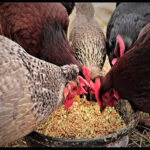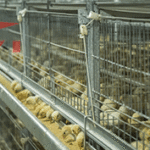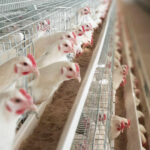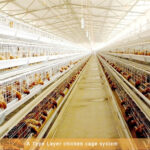Concept renewal of poultry farming management
Concept renewal and development strategy in poultry production… After decades of development, the chicken industry has experienced a wide range of rural areas from random breeding to breeding professional households to family-scale farming and high-standard mechanized scale farming. The poultry breeding equipment has advanced and the scale of breeding has expanded. The number has increased from tens, hundreds to tens of thousands, or even hundreds of thousands, but the breeders feel that chickens are more and more difficult to raise and the economic benefits are getting lower and lower. In addition to factors such as increased disease, most of the farmers are still the original farmers, and a small part is transferred from other industries. These people have relatively lack of animal husbandry and veterinary knowledge, and the culture concept and management mode are not updated and improved.
1. Use high-quality feed to improve nutrients in the diet
70%~80% of the cost of breeding comes from feed, which is also the key to raising chicken. Many farms pay too much attention to price when purchasing feed, while ignoring feed quality. The protein, energy, vitamins, minerals, etc. of low-quality inferior feeds are often insufficient, unbalanced, or the use of substitutes can be low in absorption rate, resulting in poor dysplasia, poor disease resistance, many nutritional diseases or long-term survival of chickens. Health status; even more terrible is poor quality feed, often over-standard mold, causing poisoning or immunosuppression.

2. Reduce stress factors and create a suitable growth environment for the flock
Poor ventilation, dust, congestion, humidity, low temperature, high temperature, unsuitable humidity, excessive levels of harmful gases, thief wind, vaccination, drug treatment, malnutrition and feed conversion can cause stress on the flock, leading to the secretion of corticosteroids in the body. Increased, adrenocortical hormone can significantly damage T lymphocytes, while inhibiting the phagocytosis of macrophages, increasing the catabolism of circulating antibody lgG, and the body’s own immune function is reduced.
3. Control the temperature
The temperature control of the house should grasp “two 2 °C”. First, as the age of the chicken increases, it will slowly decline and cannot fall too fast. Generally, it will be reduced by about 2 °C in a week to prevent the chicken from being cold due to the temperature drop, causing cold stress and inducing respiratory diseases. Second, when the temperature begins to drop in the evening, it is necessary to reduce the temperature difference between the house and the house as much as possible, and to control the temperature difference within 2 °C. The smaller the temperature difference, the better, to prevent the temperature of the house from rising and falling, and to induce respiratory diseases. The optimum temperature for the laying stage is 13 ° C ~ 23 ° C, should also avoid too much temperature fluctuations in one day.
4. Control ventilation
The closed house improves the environment of the house by means of lateral ventilation, over-ventilation and longitudinal ventilation, so that the concentration of oxygen, carbon dioxide, ammonia and carbon monoxide in the house is required.
Automated poultry farming equipment enables automatic data transfer: all production data can be transmitted in real time on the control cabinet. The field is equipped with an automatic alarm system controlled by the control cabinet. If there is any problem, the control cabinet interface system will automatically alarm.











